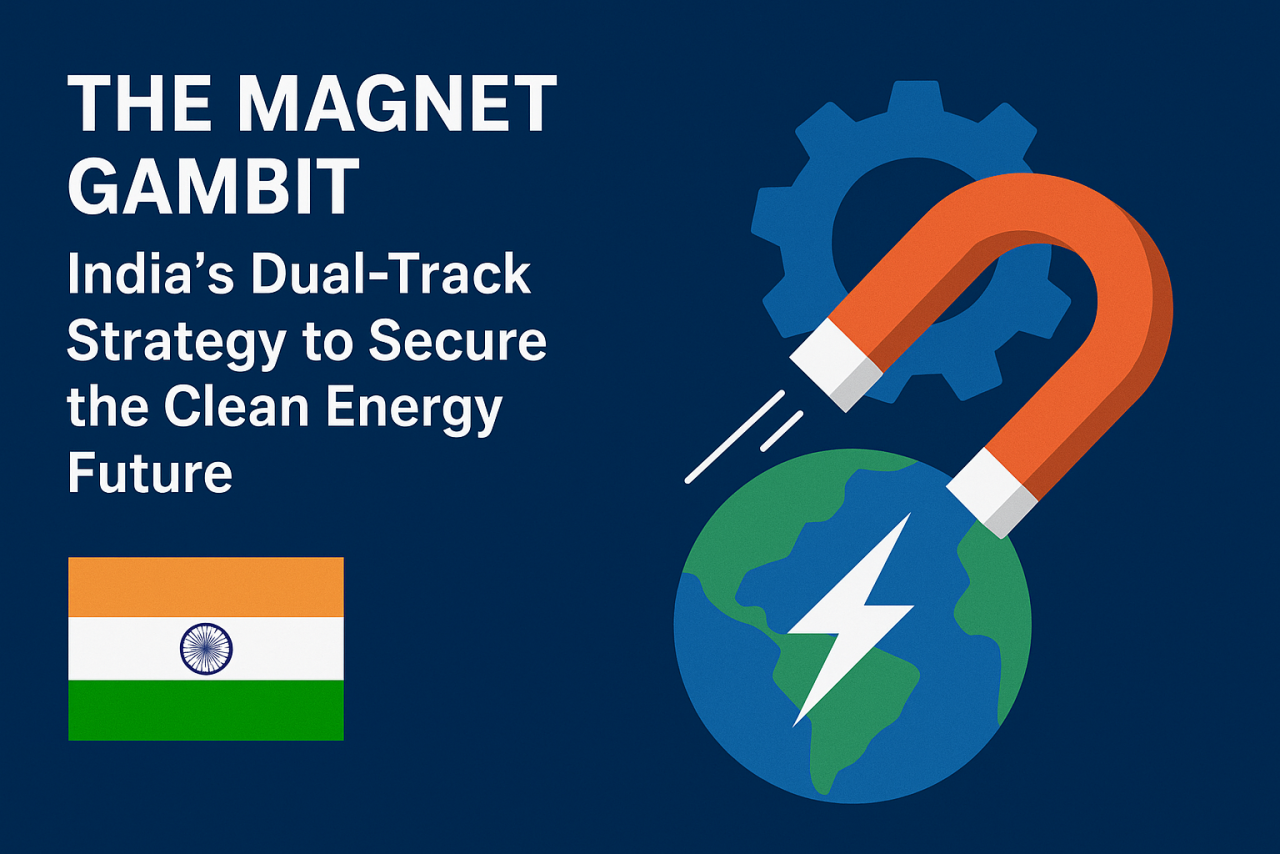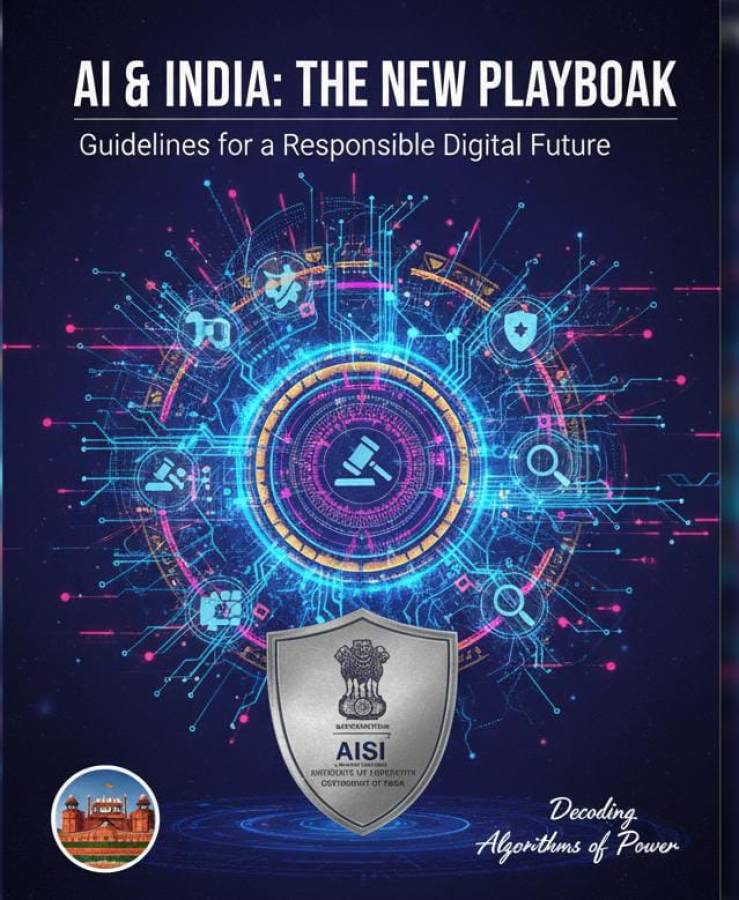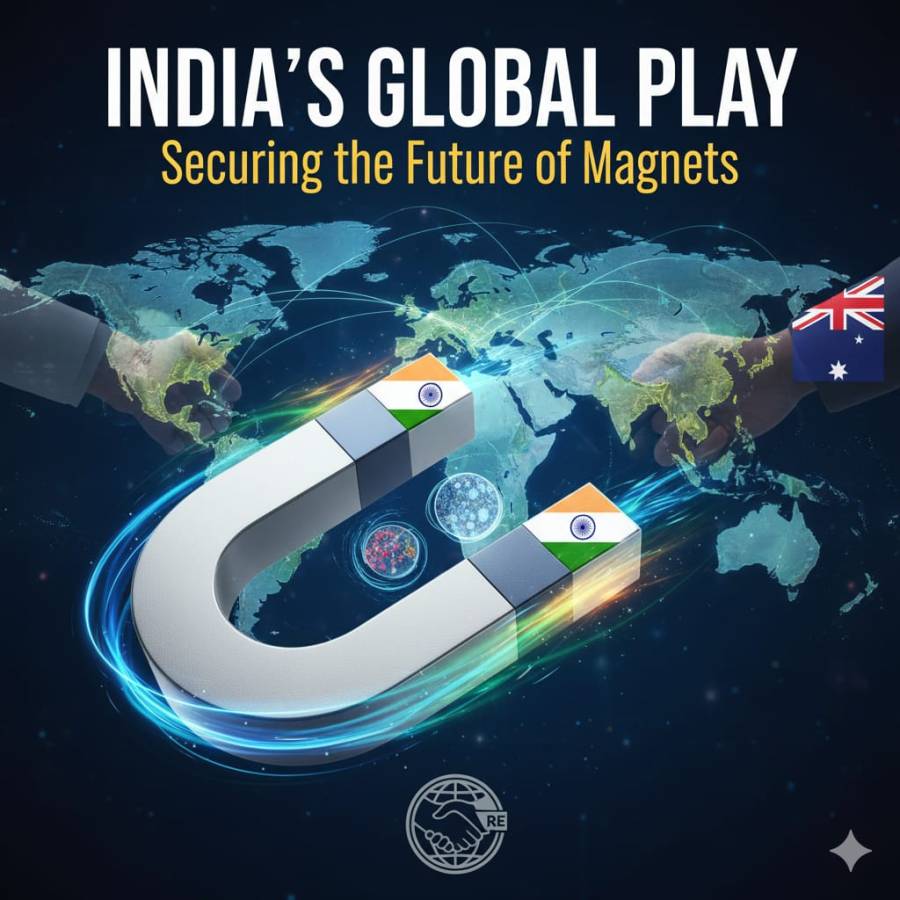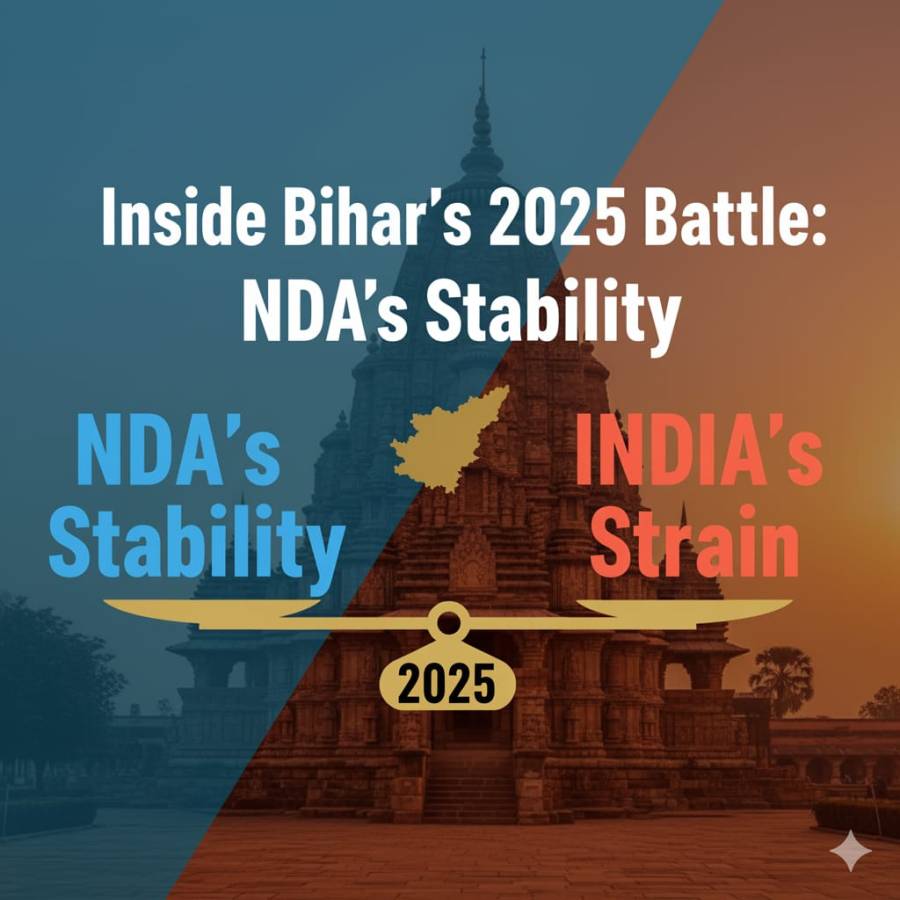
The global pursuit of net-zero emissions and the acceleration of the Electric Vehicle (EV) revolution hinge on a single, powerful component — the rare-earth permanent magnet. These high-performance magnets, primarily composed of Neodymium and Dysprosium, are the silent engines driving EV traction motors, wind turbine generators, and advanced electronics. Yet the supply chain for these critical materials remains overwhelmingly controlled by one geopolitical player — China, which dominates global processing and manufacturing capacity.
Recognizing this strategic vulnerability, the Indian government has launched a robust, two-pronged policy to shield its growing clean energy and high-tech manufacturing sectors. This is not merely an incentive program; it is a geopolitical de-risking strategy designed to build technological autonomy and secure India’s clean energy future.
The Urgency of Diversification: Why Now?
India's ambition to transition its mobility and energy grid rapidly requires uninterrupted access to high-grade components. The current market structure poses a clear threat. Any political or trade disruption could halt India’s EV roadmap and impair its progress in wind energy. The sheer dominance of China responsible for over 90% of the world's refined rare-earth output is an uncomfortable reality for any major economy.
The government’s response addresses this head-on with a dual-track approach: a tactical push for immediate domestic capacity and a strategic commitment to alternative, magnet-free technologies.
Track 1: Catalyzing Domestic Magnet Production
To address the immediate deficit and establish a foundational domestic ecosystem, the government is rolling out a substantial Production Linked Incentive (PLI) scheme. Reports suggest a dedicated allocation, potentially exceeding ₹7,300 crore, aimed specifically at magnet manufacturing.
This support is designed to:
Attract Investment: Lure both global and domestic firms into setting up integrated rare-earth processing and magnet manufacturing facilities.
Secure Raw Materials: By offering predictable demand, the policy incentivizes global rare-earth oxide producers (outside of the current dominant sources) to partner with Indian players, thereby diversifying the raw material pipeline.
Build the Value Chain: Encourage the domestic ecosystem to move beyond mere assembly and into high-value steps like sintering and finishing, which are crucial for performance magnets.
This tactical intervention is vital. It buys the country time, reduces import dependence in the short run, and establishes a base of technical expertise.
Track 2: The Strategic Pivot to Magnet-Free Technology
The true game-changer, however, lies in the government's strategic push toward rare-earth-magnet-free technologies. This long-term vision recognises that localising a vulnerable supply chain is ultimately less secure than designing a new one entirely.
The industry is being actively nudged to pivot R&D towards alternatives like:
Synchronous Reluctance Motors (SynRMs): These motors, which use the difference in magnetic resistance between the rotor and stator to generate torque, contain no magnets at all. They are robust, highly efficient at specific speeds, and use common, inexpensive materials like copper and steel.
Advanced Ferrite Motors: These utilize widely available and cheap ferrite magnets instead of high-cost, supply-constrained rare-earth magnets. While they traditionally offer lower power density, advances in design and control systems are closing the performance gap for many applications, especially in two and three-wheelers.
To accelerate this transformation, the government plans to leverage significant funds from the Anusandhan National Research Foundation (ANRF), a ₹50,000 crore initiative. These funds will be strategically directed towards corporate and institutional R&D collaborations focused on these non-rare-earth motor architectures. This commitment to R&D, aimed at reversing India's historically low investment in this area (around 0.7% of GDP), is the engine driving the strategic change.
Securing Autonomy and Sustainability
For India’s major automotive and ancillary industries, this policy is both a challenge and a profound opportunity. Early movers investing in magnet-free innovation will not only gain a competitive edge but also insulation from global price shocks and geopolitical disruptions.
The government’s message is unmistakable that India’s clean energy transition must be secure, resilient, and autonomous. By simultaneously fostering a domestic magnet industry and championing magnet-free alternatives, India is not merely catching up but it is engineering a sustainable, self-reliant future for its clean energy and technology ecosystem.




















